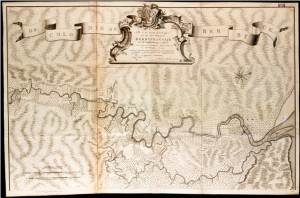Part 1: Indigenous Guyanese and the arrival of the Europeans
According to a Timehri Journal (Vol. X 1896) article called ‘The Indian Policy of the Dutch’, when the early European explorers arrived in Guyana, the coastlands and further districts may have been heavily populated by various indigenous tribes.


It suggests that as much as 140,000 Caribs may have been living in the territory, with a fourth inhabiting between Corentyne and Essequibo and the remainder in areas that included the North West district and the Orinoco delta.
The article notes it was likely that there were four main Carib regions that were known as the Kingdoms of Pawrooma (Pomeroon), Moruga, Waini and Barima, in which the chief towns were called Maripa, Cooparoore, Tocoopoima and Pekwa.
It also cites a 1666 estimate by Major John Scott, who was sent in 1665 by the English governor of Barbados to invade the Pomeroon settlement, that states the population up to the Orinoco delta included 28,000 Carib families, 8,000 Arawaks and an unknown number of Akawaios and Warraus.
In fact, it is suggested that the sheer numbers of the indigenous populations that fiercely defended their territories, were perhaps one reason why the Spaniards were unable to gain a foothold on the lands at the time. According to the article, the Spaniards had earlier aggrieved the locals, and it was left to the later arriving Europeans to gain the trust of the local populations by proclaiming their own enmity towards the Spaniards. Information suggests that agreements made by Van Peere in 1627, when the Dutch settled in Berbice, included pledges “that the Indians should be treated justly and honestly, that promises made to them should not be broken, that they should not be robbed, and that his colonists should not interfere with their wives.”
Despite such agreements however, an Indian slave trade later developed, and in 1686 Ordinances had to be passed prohibiting such activities in the settled regions. The feature mentions an incident where settlers were killed by indigenous Indians because they had enslaved a native, which led to an order by a Commandeur Abraham Beekman that indigenous individuals could not be bought “without the transa[c]tion being witnessed by the Commandeur.” Eventually, a “special tax” was levied upon “red slaves” in 1717, and ownership was limited to six. (TO BE CONTINUED)



